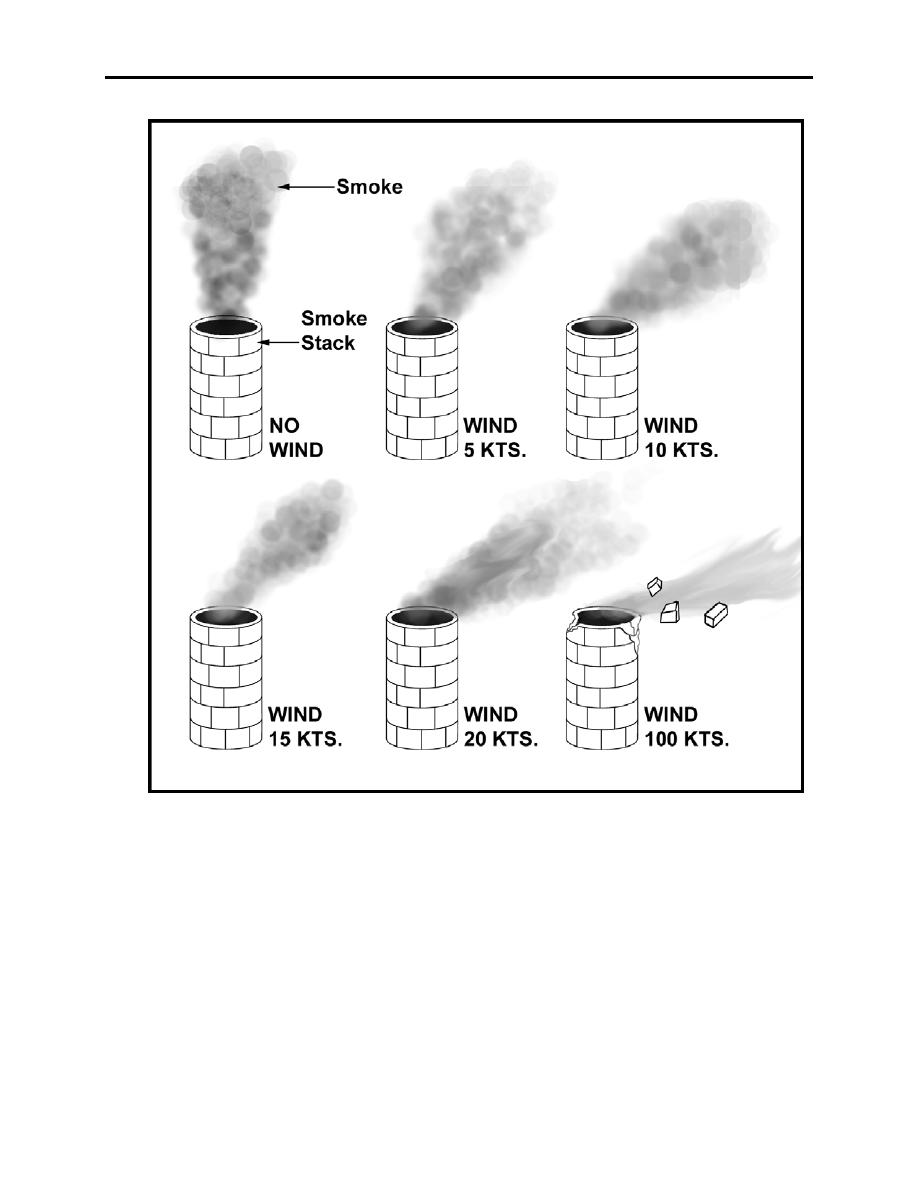 |
|||
|
|
|||
|
|
|||
| ||||||||||
|
|  CHAPTER FIVE
T-6A NAVIGATION
Figure 5-10 Smokestacks
There are several visual cues available to determine wind speed and direction. Water
(waves/spray - white caps at 15 knots of wind), windsocks, and even airport traffic patterns give
clues to wind direction and magnitude. Smoke (or steam), one of the easier cues, is fairly
common and can serve as an excellent initial wind estimation or confirm an existing wind
estimation because you can observe the smoke at your altitude.
Wind analysis using smoke is most effective when viewed from directly above; the further away
the source of the smoke is from track, the less accurate your analysis. If your track does not take
you directly over the source of smoke, make your estimations from the closest point of approach.
While direction is easy to determine, it requires practice to determine wind magnitude.
5-22
FLIGHT PROCEDURES
|
|
Privacy Statement - Press Release - Copyright Information. - Contact Us |